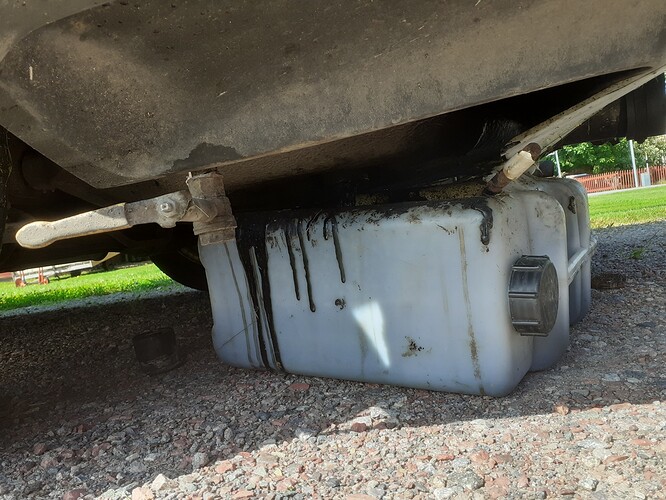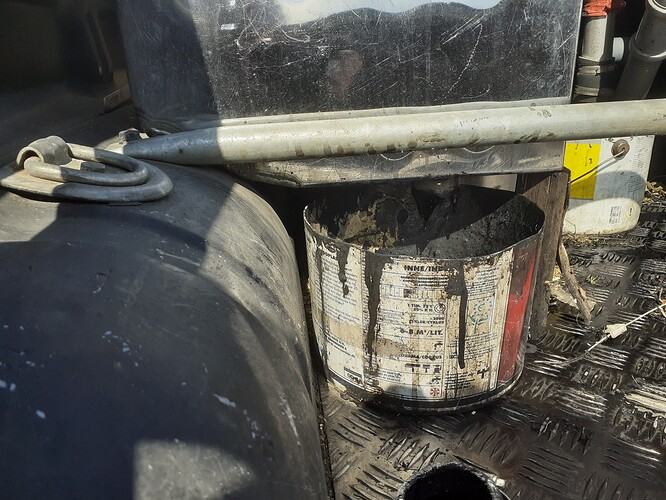Yes, it won’t idle at all. You can rev the engine to 2000rpm and hold it there, but it stutters and runs unevenly.
Luckily I have my reader so I can see where the problem is, have you bought any yet?
Tom already beat me to it, @Jan. My Volvo hardly runs at all without knowing manifold pressure. It affects timing as well. The Volvo has no airflow meter.
Another question I missed…
A very small % . A few limbs of spruce or pine may sneak into the pile. The majority I’m running is what you would consider soft wood though - grey alder, willow and such. Bulky, but ok. Paper birch is my favorite up here. No real hardwoods to find.
That is great the heat gun worked for you. I used it too when I first did my rebuild on the 92 Dodge Dakota from the book after driving it home from Chris S. House.
Because it sat at his place for a long period of time the tar in the hopper all drain into the tar holding tank and filled to the top. I used a heat gun to heat it up to drain out. The only problem I had was I started a fire inside my tar tank and it was still mounted inside the fender well of the truck. Lol, I was wasn’t lol at the time. Water put the fire out and cleaned the tank out. My next tank build for the truck will be removable with easier accessablity.
I think one other thing should be consider when building for colder country is a little heat from the gasifer next to the tank that can be regulated from winter to summer months for use… Mine tank is to far from the gasifier and separated by a air gap and a metal truck bed.
It is hidden and out of sight of the on looker.
Yes Bob. That’s what I used to do - have an easy to remove tank. When too much tar in it, bring it indoors and heat it up - much like @Jan is doing. But it was tempting not to be forced to mess with that. Wayne’s way looked so easy - just pull the plug and let it drain. And it works well here too - on a summer’s day with temps above 85F (we had a couple of them a few years ago ![]() ) But - I need to drain tar at least 4-5 times a year and half the year even plain water is rock solid.
) But - I need to drain tar at least 4-5 times a year and half the year even plain water is rock solid.
Tank close to the gasifier is good. My tank is hugging it inside the trunk, but unfortunately it would still take several hours of driving to melt a block of tar this way. It seems tar is extreemly insulative. Also, the tank can’t be kept too tight to the gasifier or the water will start boiling on longer trips.
I’m sure there are several solutions to the problem. Revert back to a removable tank is one of them. Biggest problem is someone has to make it happen.
I talked to Al Flick at a Argos woodgas meet up a few years back. He showed me his inverted cone that was fixed to the top of his hopper lid on his Ford Ranger truck. It would catch the tar vapor on the outside rim and it would condense and drip to the center of the cone that had a 3" hole at the center. The tar would drip off the cone and drop on to the center of the wood going down in the hopper. He said he had very little tar go to his tar condensation tank, mainly black tarly water.
He also claimed he got better wood gases from the tar and wood combine, and could go longer miles with out refueling per pound of wood than othes. He said he had no problems with tar getting into the wood gases and going to the engine. He lives in the Nothern part of the USA if I recall correctly. I had the pleasure of riding in his truck and it drove great.
Lots of different ideas of how to deal with the extra tar that comes out of the wood when DOW.
That is actually a really good idea, it gets a second chance to be cracked in the bed that way.
Tom Holtontcholton717Premium Member
This is something that’s always on the back of my mind. The incredible sharing of information that’s been done on the Web that is gone in the blink of an eye because some one got tired of or was unable to keep a site running. Not to mention that the whole thing is dependent of some seemingly mythic server farm being able to keep drawing power from some outside source in a increasingly fragile world infrastructure. Think about the untold knowledge that was lost when the Library at Alexandria was destroyed. The same will happen with this. Very little of it can be hard copied
This happen to a very good website in Australia about 4wd
Who ever is running the site can do what is called a site backup to a hard drive .
My V-10 ram will be at normal operating temps in about two miles and enjoys working on the farm or cruising around town all day . Does not like hyway speeds over 60 mph with out going hybrid .
My dakota truck takes about 14 miles to be at what I consider normal operating temp driving hyway speeds . It doesn’t enjoy putting around town but likes to be on the big road 60-70 mph
Hi Wayne what do you put this down to mate . what are the differences between these two builds other than engine size cheers phil
I think your Dakota needs a new thermostat Phil. ![]()
Jan-Ola Olsson (SWEDEN jere in Australia my brother has taken a 83kw battery oit of a crashed Tesla he got for $2000 (he sold the other parts for $3500) and runs his house and sells back to the grid maybe you could do similar
You can check the wayback machine. They essentially crawl and archive the whole internet, but a lot of times they can’t get past subscriber paywalls.
https://web.archive.org/
if you find something useful, send them a donation.
Good morning Phil.
The gasifers are very similar but the trucks are much different. One is small and light with a small profile . The other is heavy with a large profile .
The small truck will travel 1.25 miles per pound of wood . The bigger truck requires about 2 pounds of wood to travel one mile .
I’ve made it a habit to make a post every inspection. Today was the day and to my delight the Volvo passed and is good for another two years. Downside was I had to make the trip into town on gasoline. I found myself glancing at the vacuum guages every accelleration, only to find they didn’t move ![]()
This was the only pic I remembered to take. Rack, cooler and coffin hovering, while the Volvo sat outside dreading the disgusting liquid fuel it was about to be fed.
Drained the tar tank again today. Removed it this time, to benefit from the heat of the Sunday sun ( 50F ![]() ). Well, used the torch some too.
). Well, used the torch some too.
The only pic I remembered to take was when I started to unplug the drain with hammer and chisel.
Ops! Seems to be the same subject as last time - tar draining. Both woodburners are draining. Hottest day so far this summer. 25C or 77F. Still, the tar is stiff and slow. It would probably have liked at least another 10 degrees.
Oh, and pics turned out crap. Hard to focus on something black in full sunshine.
Yes a hot gasifier after running it and a hot day is needed to get all the tar drained out. I will use my reverse blower to blow heat out the hopper and through the piping and tar tank drain to get more tar out when draining the tar out. It helps the thick tar to flow better out the drain.
Thanks for the ride JO. I can drink and drive this way ![]() .
.
All the red houses are wood?
And part two? Per?
Nice drive! I see you have old ladies that walk out in front of cars too! I just realized you drive on the correct side of the road. ![]()
I definitely see a difference from the US. We have to paint centerlines to keep people on the right side of the road. The asphalt didn’t have a 100 potholes per mile, and there were no convenience stores/gas stations, or signs for roadside stands for like eggs or even garage sales. And the houses are all the same color. ![]()
Impatient!! The manufacturer says you are supposed to age it for like 6 years in a wine cellar for best flavor. ![]()





